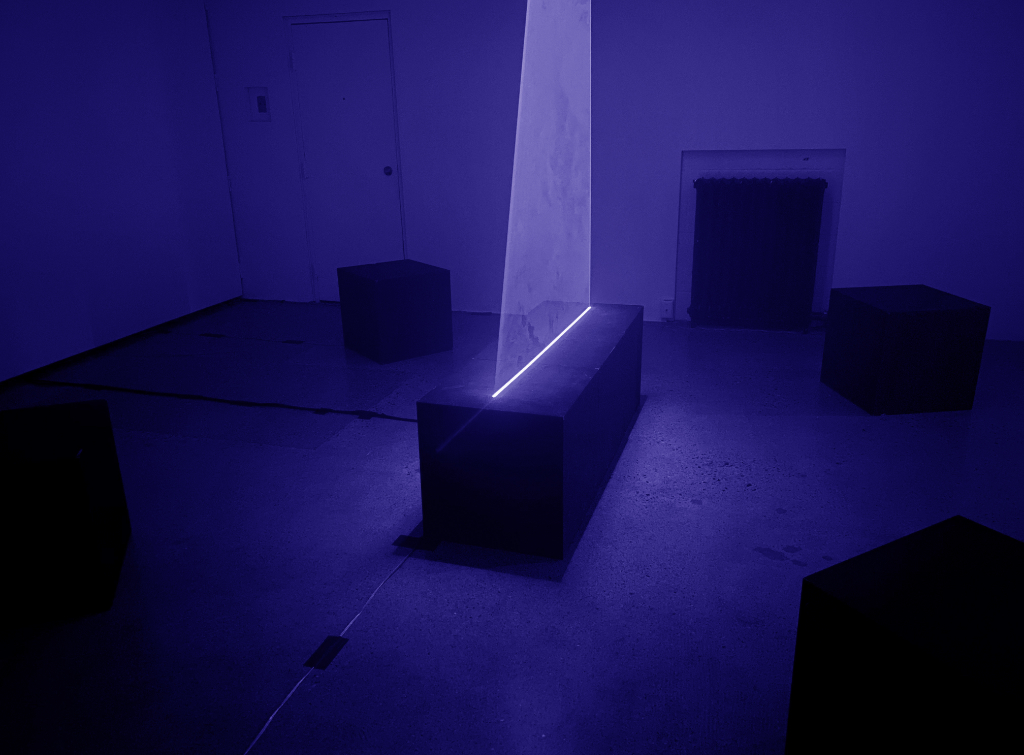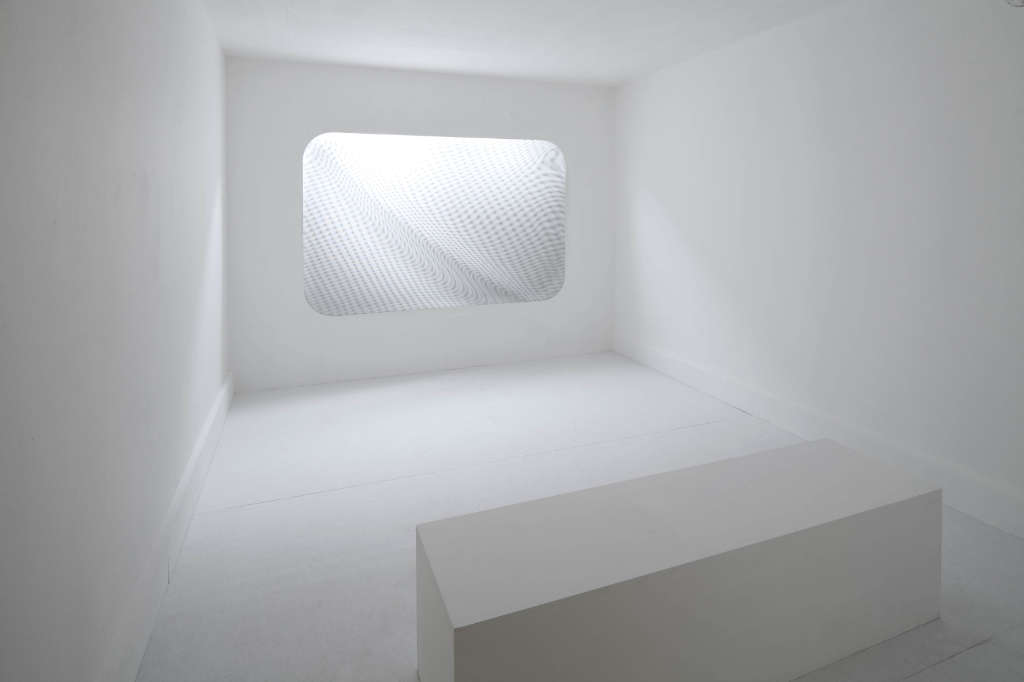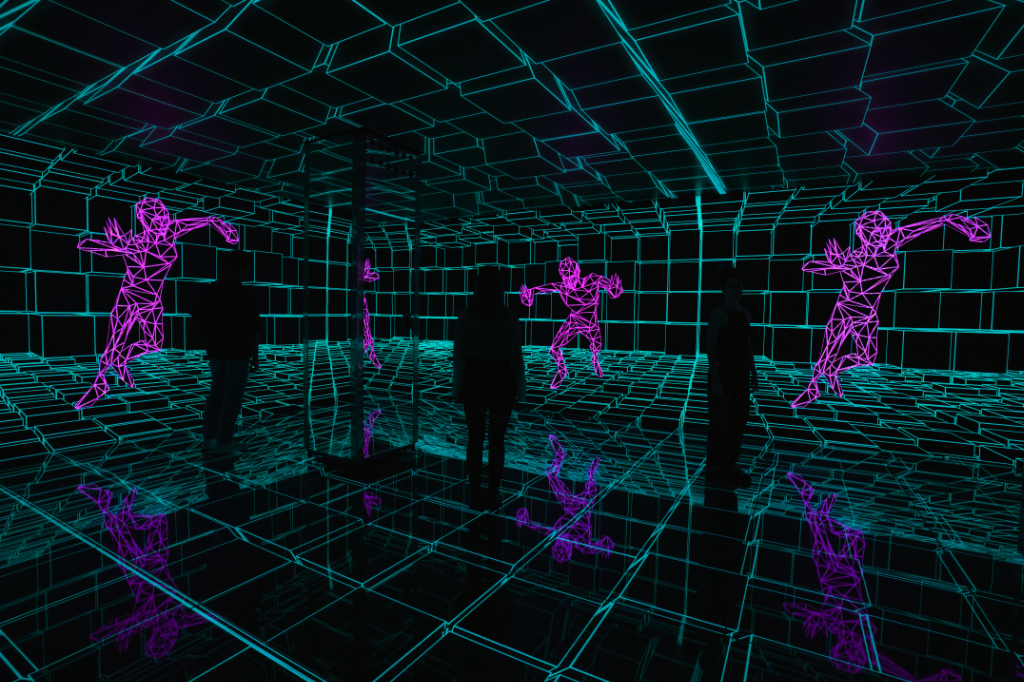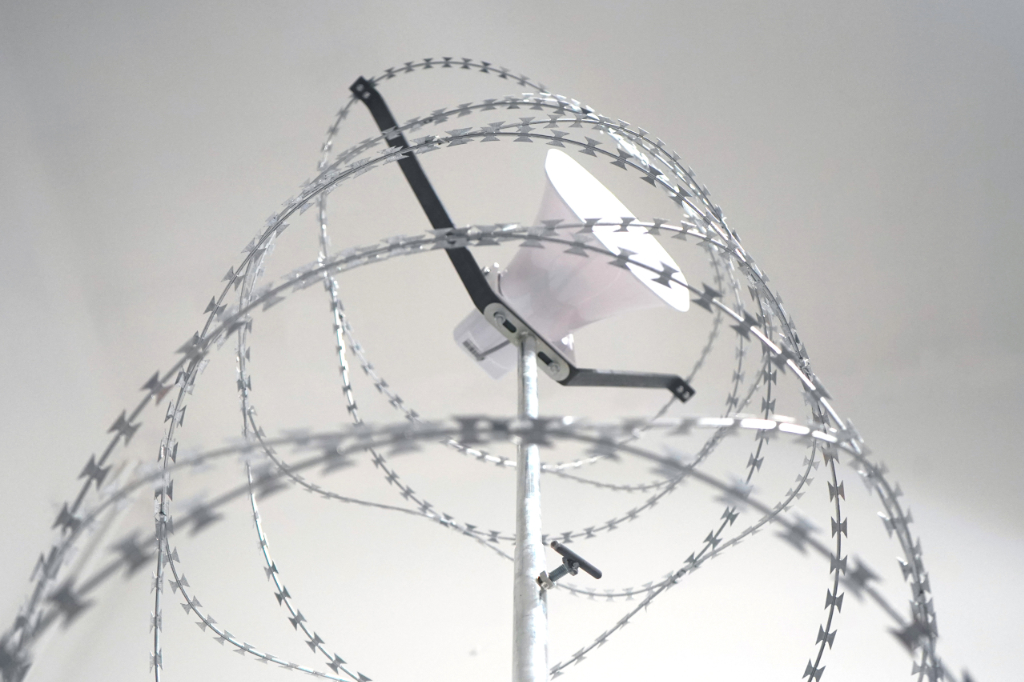Text by Jacobo Garccía & Ana Prendes
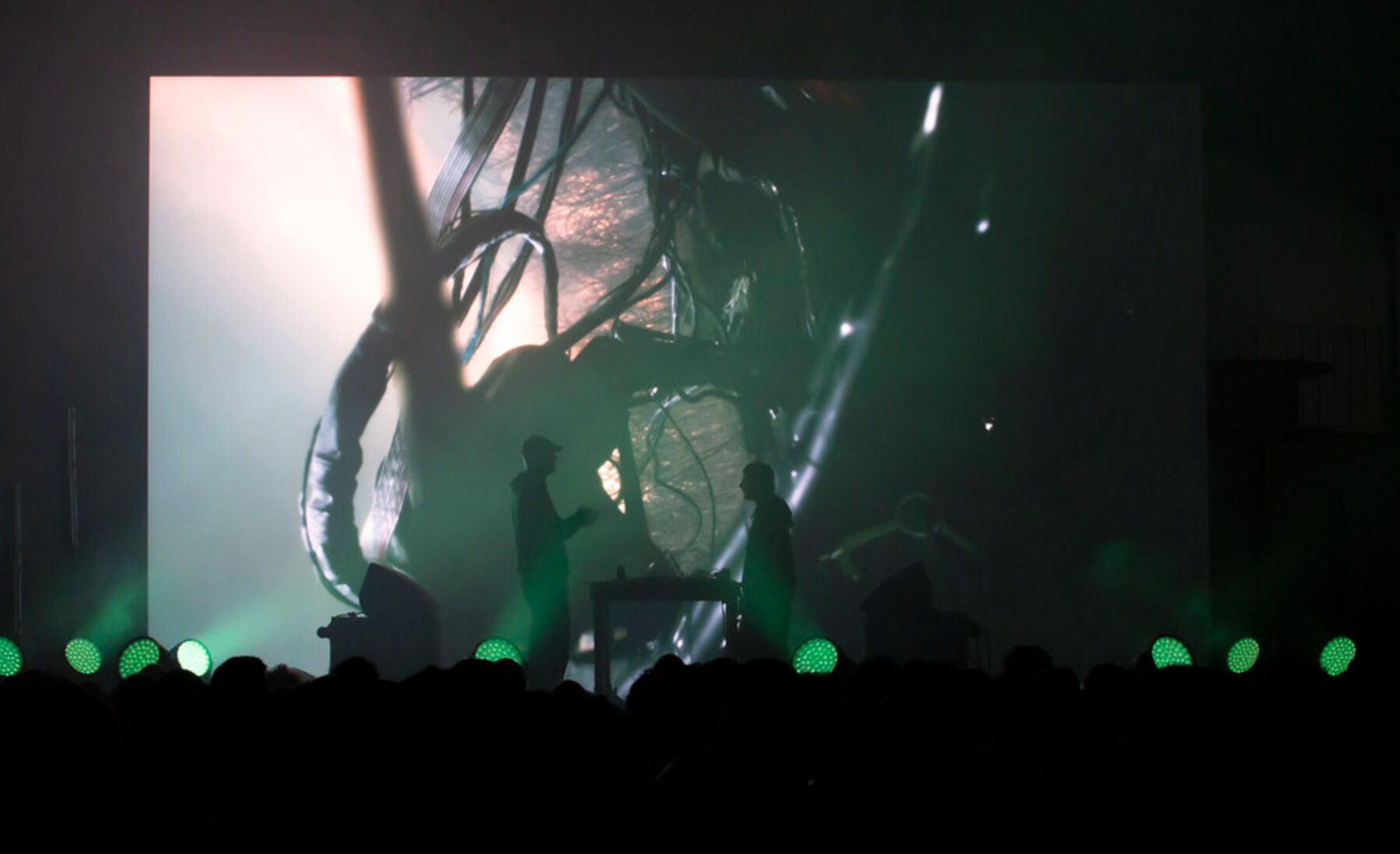
If we could pick just one word to define the 18th edition of the L.E.V Festival, that would be rejuvenation. A glance at the lineup revealed a significant emphasis on upcoming artists. Names like Aïsha Devi, Rrucculla, Noémi Büchi, Myriam Bleau & Nien Tzu Weng, Puce Mary, Sin Maldita & Lei, Jacques, LCY and Sophia Loizou stood out. Only Scanner and Martin Messier can be considered veteran figures so-called, with Evian Christ in as a respectful third in that category. Some may argue that this statement stretches the argument a bit too far. However, in a music scene that reveres experimentation, boundary-breaking, sonic exploration and everything new, this focus on eager talent cannot be understated; it is right at the centre of the festival ethos.
Another remarkable aspect of this edition was the way it brought together different generations of artists and audiences. Discovery and experimentation were attractive draws for many, with some attendees likely attending having trusted the festival’s programming team to deliver a phenomenal music experience even without knowing many artists in the lineup.
The festival kicked off on Friday at Teatro de la Laboral with Bromo, an audiovisual project by producer Paloma Peñarrubia and visual artist Azael Ferrer. Their music influences revolve around classic IDM sounds, employing melodic phrases and unorthodox rhythms, setting the stage for a performance steeped in technological optimism. The show flows by celebrating the potential of recent scientific breakthroughs and emerging technologies. It was refreshing to watch a show that delivered a constructive vision of science, more so in times of scepticism surrounding natural therapies and fake news.
Martin Messier presented his latest project, 1 Drop, 1000 Years. As the title suggests, water is the central element of his project. A visual lead show, its minimalistic visuals tricked you into thinking: Is it an actual fluid falling down the stage? Martin plays with geometry and symmetry, creating a liquid choreography of water—the only visual element—enough to provoke awe and a sense of magic. Subordinated to the visuals, the bleeps and short sonic pulses elevate and cohere the experience. At some point, the artist physically interacts with the installation, breaking the illusion. In the end, it is always a farce. But for a few minutes, Martin Messier made us believe the old adage: any sufficiently advanced technology is indistinguishable from magic.

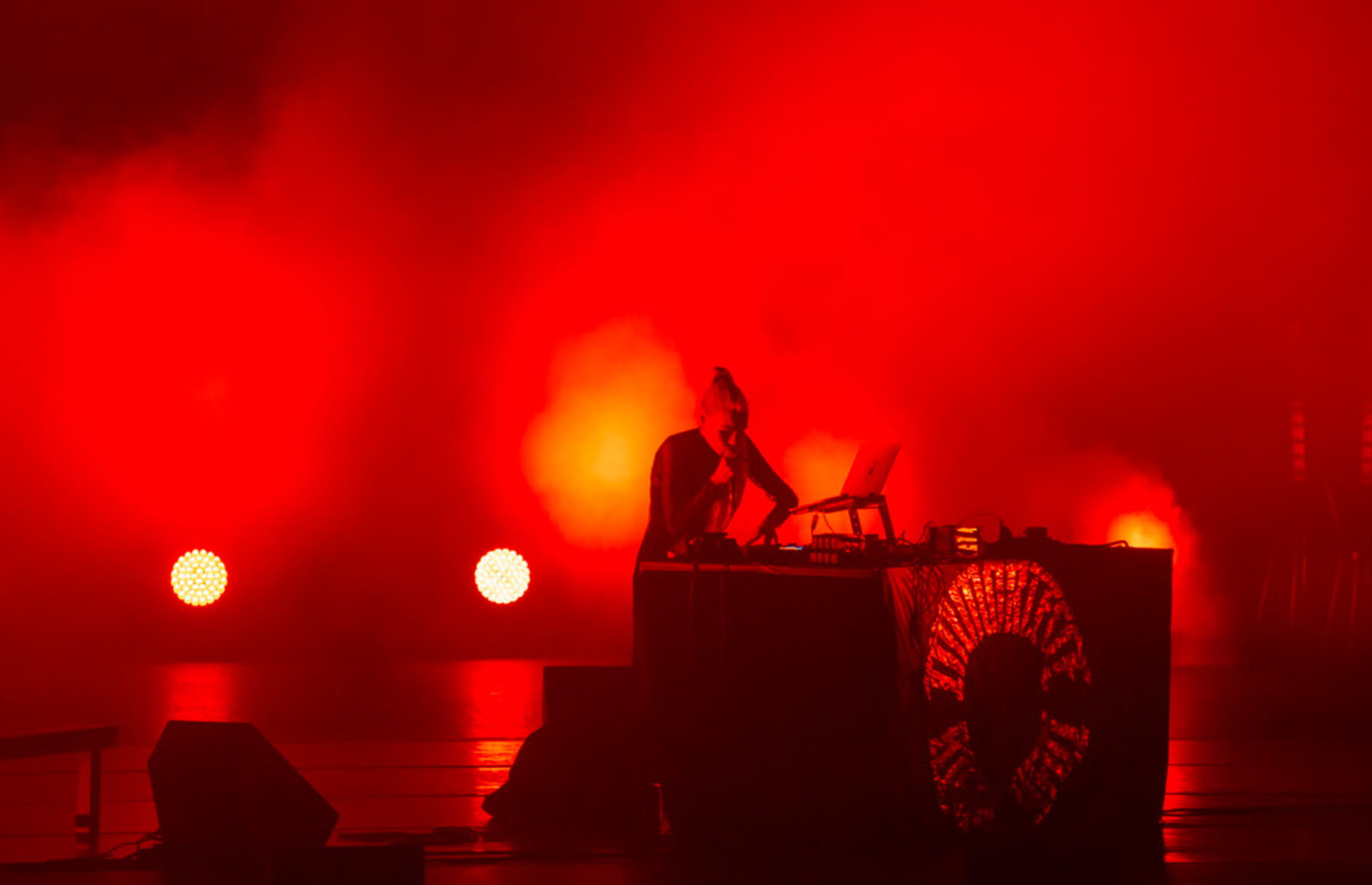
Aïsha Devi took over the stage for the definitive show of strength. Her dystopian pop meets existentialist rave music was presented with majesty, imposing volume and presence. Amidst all this chaos she created, Aïsha gave us grief and anguish but comfort in the form of new-age and pop sonic reflections. Trying to sonically imprint on the audience pain on the same level as the anguish of her vocals, reaching the moment of relief, Aisha happily commanded the audience to stand up from their chairs to join her in the final dance. The Muséu del Pueblu d’Asturies pulsed with anticipation on a sun-drenched Saturday afternoon. The open-air ethnographic museum’s afternoon shows unfolded inside the grand, wooden Tendayu, which drew in a bustling crowd that spanned generations.
Basque powerhouse RRUCCULLA unveiled Sound Sketches, an exclusive set built around her latest album, Zeru Freq, alongside unreleased material. The composer, producer and visual artist seamlessly transitioned between mastering the decks and taking the command of the drums, enveloping us in a dynamic interplay between avant-garde electronics and psychedelic percussion. Her abstract, sleek drawings came to life as 3D digital sculptures set within evocative landscapes of northern Spain. This balanced dialogue between sight and sound stayed away from any sense of visual dominance. A self-described ‘sound expressionist’, RRUCCULLA channelled the movement’s masters, injecting her textured compositions with a subjective and emotional depth. Her set continuously distorted and mutated, embodying the broader artistic realm her practice inhabits.
A masked half of Dengue Dengue Dengue brought the afternoon to a pulsating close with a genre-bending set. The crowd danced under a tropical storm of rhythms – a fusion of chicha, techno, and experimental bass, punctuated by traditional flute melodies and downtempo grooves. Their mix showcased their in-depth exploration of traditional and contemporary Peruvian and Latin American sounds. Rich visuals blending footage of cities, vox pops, and digital rainforest renders fueled the infectious energy of their electro-organic sound, keeping the audience eager for what was to come.
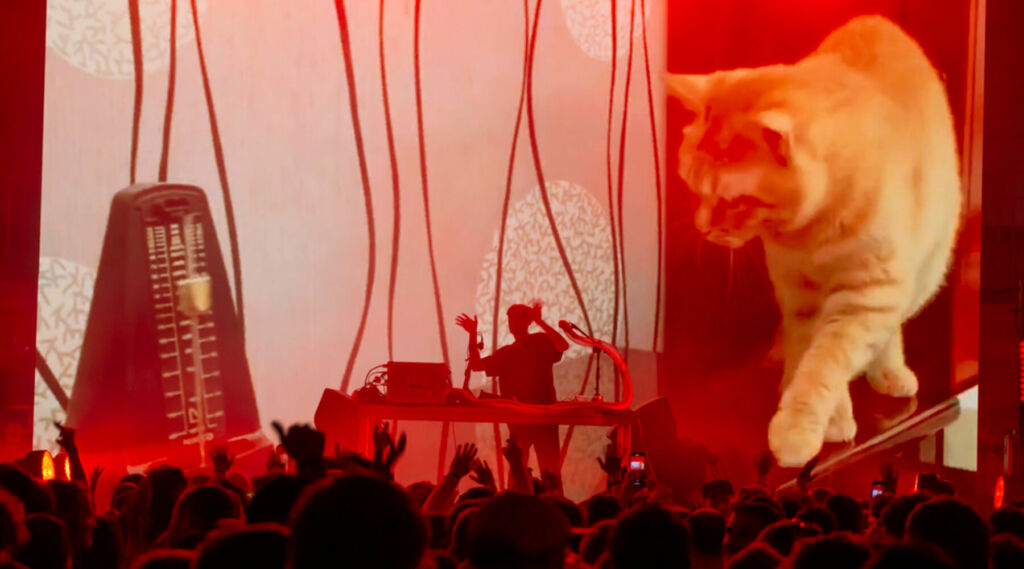
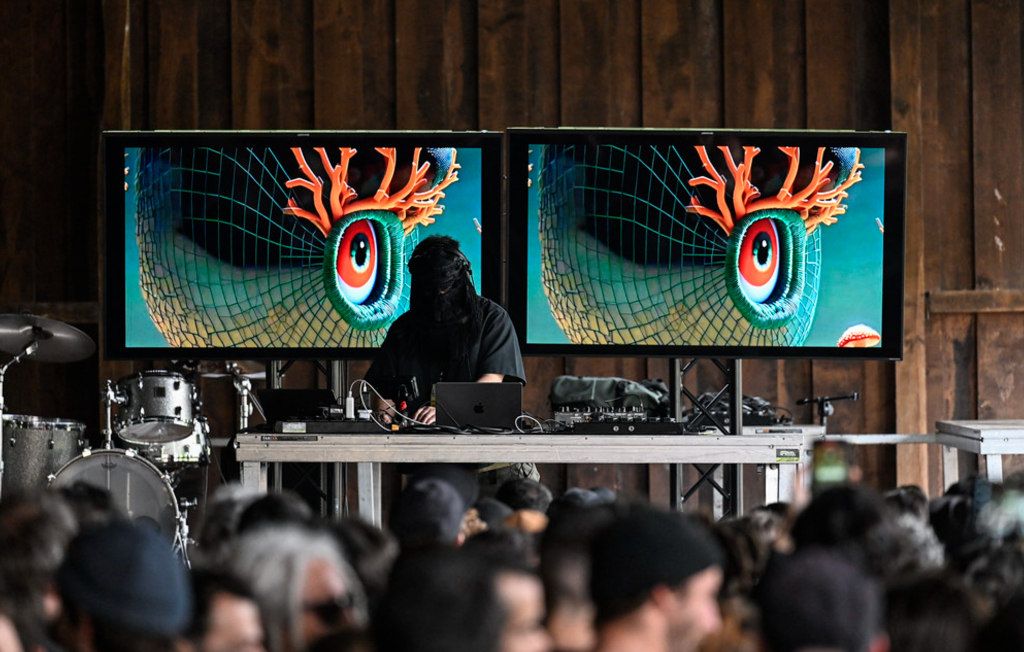
Upon our return to the Teatro de La Laboral, digital artist Myriam Bleau and choreographer Nien Tzu Weng evoked the in-between space between our physical and virtual realms with the premiere of Second Self. Clad in black bodysuits, the performers engaged in a dialogical choreography with custom LED touchpads spanning their faces and bodies alongside mobile vertical screens. As their movements interacted with these prosthetic-like devices and their projected digital avatars, the entire sonic and visual experience transformed. Their evocative interplay sparks crucial questions: are our digital devices already extensions of ourselves, mirrors reflecting back, or something that fosters the rise of a nascent second identity? Through the performers’ bodily agency, Second Self challenged the blurry limits of our body interfaces.
Entering the Laboral Centro de Arte’s basement, we encountered an eclectic blend of performances. This hinted at an evening marked by unexpected transitions and mood variations, catering to a diverse audience eager for exploration. Sin Maldita and Lei’s Aelcrush shattered the rave’s frenetic energy with a cinematic experience set within a game world. Their visuals unfolded a rich narrative that wove familiar Earth-bound landscapes with fantastical scenarios into a hauntingly beautiful, post-apocalyptic universe. Their blend of hybrid club beats and experimental pop prompted a reflective exercise of worldbuilding and storytelling. This shift may not have resonated with everyone seeking a high-energy experience.
Contrasting with the stillness, French artist Jacques, wielding his iconic snake microphone, forcefully propelled the crowd into motion with Videochòse, his latest show venturing into transcendent techno beats and psychedelic rhythms. He concocted a danceable experiment that seamlessly integrated everyday sounds like ambulance sirens, crowd shouts, and crying babies. Amidst a whirlwind of clips of his younger self, unexpected papal cameos, and playful marketing slogans, his visuals presented a refreshing and witty departure from digital environments. Jacques emerged as an immediate festival standout through this meticulously crafted chaos, reaffirming his stature as one of France’s most distinctive electronic innovators.
Moving further, the highly anticipated headliner Evian Christ extended the night’s contrasting programme. The British musician and producer plunged us into the expanded A/V presentation of his full-length debut, Revanchist. His ambitious homage to trance music enveloped the audience into a more conducive winding down than energising the crowd, a journey through sublime spatial soundscapes facilitated by the monumental Longinus array – a fresnel screen adorned with LED projectors and bounce mirrors – created in collaboration with designer Emmanuel Bird.
London-based artist LCY capped off L.E.V. with the world premiere of their new audiovisual live show. Despite technical hiccups with the visuals – a pulse of distorted humanoids and frenetic energy – LCY’s commitment to sonic exploration shone through. Their dark, deconstructed set, a potent homage to UK club music with its gritty basslines and industrial textures, captivated the crowd and brought them back to the dance floor for a truly remarkable closing set.
The festival’s 18th edition was a testament to its enduring power of experimentation. The confluence of factors – the focus on fresh talent, the intergenerational exchange, and the audience’s trust in the curators – paints a vibrant picture of LEV’s health, success and longevity. No wonder this event is one of the oldest and most respected in the Spanish electronic scene.






